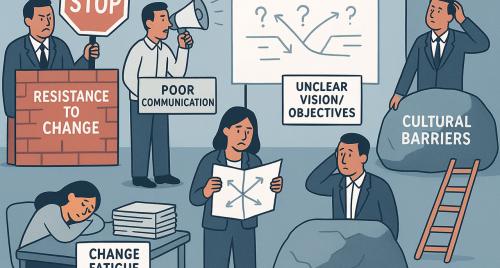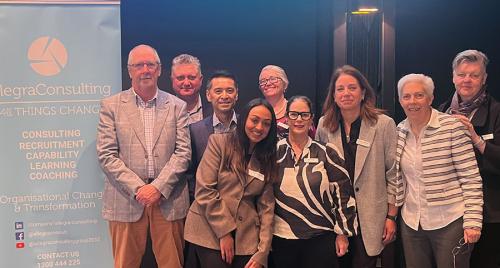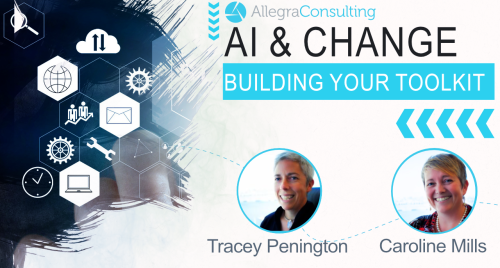
Ever been involved in a home renovation that started with a vision board and ended in budget blowouts, dust in your Weetabix, and someone yelling, “That wasn’t supposed to be a supporting wall!”?
That’s what organisational change can feel like when it’s not set up correctly. Plenty of noise, a Pinterest board full of ambition—but very little structure holding it together.
Here’s what I see too often—and what organisations keep getting wrong about change:
1. Skipping the Current State
Some big-name consultancies will tell you that understanding the current state isn’t necessary. “Don’t look back,” they say. “Just design the future.”
Honestly? That’s like knocking down your kitchen without checking which walls are load bearing. Maybe if you are starting from a blank slate (aka bare ground or no organisation) that might make sense but not knowing where the load-bearing walls and the plumbing is… that’s just nuts!
Understanding the current state isn’t a luxury—it’s the foundation of good change. Without it, you won’t know what needs to shift, what’s working (and worth preserving), or what risks you’re introducing. Change isn’t conceptual art—its practical design rooted in reality.
2. No Change Governance from the Start
Here’s another renovation classic:
The tradies are turning up, knocking down walls, redoing plumbing—and halfway through, someone asks, “Who’s project managing this?”
Even worse:
“Is anyone even talking to the owner about what’s changing?”
Let’s make this real.
Is there a Steering Committee, and does change have a voice at it?
Too often, these forums are hyper-focused on time, cost, and scope, leaving people and behaviour change as a polite footnote. If change isn’t at the table, then decisions are made in a vacuum, and people feel it.
Sometimes you need a Design Authority—a place to protect the integrity of the future state. Other times, a dedicated change governance forum is essential, especially if the main program governance isn’t tuned into human impact.
Governance isn’t just checking progress. It’s about where the big calls are made—and who’s allowed to speak up when the walls are going up wrong.
3. No Success Measures, No Ownership
If you disagree on what a finished kitchen looks like, how will you know when it’s done?
Too many change efforts launch without success measures. And even worse, no one in the business is tied to delivering those outcomes.
From day one, business owners need to be focused on the key measures of success. Not just so they’re accountable—but so they’re invested. If they help design the kitchen, they’re less likely to let it turn into a junk drawer.
4. Where’s the Target Operating Model?
Here’s the scene:
Everyone agrees, at a high level, on what the dream renovation looks like. New open plan, better light, smart storage. Great!
But no one’s sat down to decide where the fridge is going, who’s unloading the dishwasher, or whether the walls can actually move.
That’s what happens when we talk about the Target Operating Model at 10,000 feet—but never land it. “Yep, we’re all aligned. Sounds great.”
But the devil? It’s always in the details.
Too many organisations assume the Project Manager, Change Manager, or BA will design the future state. But that’s not their job.
They can facilitate the process and possibly help you document it. But the business owns the operating model. They need to get specific. Because without detailed roles, processes, and decision-making, you're just sketching dreams on a napkin.
5. Thinking Change Is Just Comms and Training
Change isn’t a comms campaign. It’s not just about learning modules and launch videos.
It’s about shifting mindsets, behaviours, habits, and identity. It's about managing the people risk and supporting adoption. And that takes more than a slick email or a half-day training.
Yes, communication and learning matter. But they’re just two ingredients in the cake. Change needs reinforcement, leadership alignment, local ownership, and readiness, just as a start!
6. Not Using Change Champions, the Right Way
Change champions aren’t your “change cheer squad.”
Used well, they’re like experienced site supervisors—flagging issues, sharing updates, and keeping people engaged. Used poorly, they’re stuck handing out cupcakes and being ignored.
Choose wisely. Back them in. Give them purpose.
7. Flaky Sponsorship
If your renovation sponsor says, “I trust you, just do whatever,” and then disappears, you’re headed for trouble.
Sponsors need to show up. Make decisions. Unblock the pipes (figuratively and literally). If you haven’t had a real chat about their role and responsibilities, you haven’t got a sponsor—you’ve got a ghost.
Most research will tell you the same thing - bad sponsorship is a surefire way to fail from the start.
8. One-Size-Fits-All Change
The same toolkit rolled out for every initiative. Yikes.
Applying the same toolkit to every change is like using IKEA instructions to build a custom kitchen.
Change needs to be right-sized. Some shifts need the full blueprint, scaffolding, and permits. Others? Just a screwdriver and a Saturday.
A Change Professional's job is to have a toolkit and then understand what is needed for each change, each context, each organisation
9. Templates Are Not Transformation
You can fill out all the templates and still end up with a half-built extension and no working lights.
I’ve said it before, and I’ll keep saying it:
You can fill out all the templates and do no real change.
You can fill out barely any templates and still do great change.
Frameworks, models, and templates help structure our thinking, but they are not the change itself. Don’t confuse paperwork with progress.
10. Not Getting Real About Who is Doing the Work
This one’s personal.
There’s been a lot of talk about “facilitating” change and “empowering the business”—which is great, in theory. But too often, I’ve seen it drift into a kind of void where everyone thinks someone else is doing the work. And no one is.
Clarity matters.
What is the actual change work required?
Who is doing it?
And do they know?
Whether it’s a change impact assessment, planning stakeholder engagement, or prepping for go-live, someone has to do the work. Ensure that roles and responsibilities are clear from the outset.
Yes, so often there aren’t enough change professionals for the amount of change and yes we need to empower the business and people leaders to understand change better, but I have walked into organisations who are saying they just “facilitate” change and the business does the work and in truth….a big deep hole in the ground, and no work being done
So… Who’s Holding the Blueprint?
If your change effort feels like a renovation gone rogue—dust everywhere, no end in sight, and people arguing over paint swatches—take a step back.
Have you checked the current state? Locked in success measures? Defined ownership? Mapped the operating model?
Because great change, like great renovations, only happens when there’s a clear plan, strong ownership, the right expertise, and a shared vision of what “done” looks like.















